

Davood Roostaei
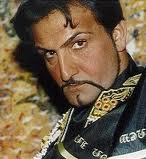
Davood Roostaei (1959 - 2023) stood as an artist and human being at a place in which no man should be forced to stand. As a young man starting his career as an artist in the late 70s, Roostaei's art studies were violently disrupted in 1979 by the Iranian revolution.
Instead of some years contemplatively learning art from masters in the country of Iran, in which he was born and raised, he was thrown in jail for two years for art which was deemed to be subversive by the regime.
What Roostaei had seen and experienced made him realize that his artistic route could not be that of the standard realistic way of depicting the world.
Thus he had to discover another way to tell us of what he had seen, imagined, and experienced.
Cryptorealism was the method of painting which he created to do this. This revolutionary painting style was originally created in 1987 by Roostaei, and it was initially referred to as abstract Surrealism. It was then aptly bestowed the name, Cryptorealism, in 1990. Cryptorealism is an expression of hidden meaning, revealed through layered imagery, which requires active participation by the observer. According to the late German art historian and critic Hanns Theodor Flemming, “ Cryptorealism conveys at first glance the impression of being an abstract-tachist painting, however at its core has a clear meaning and message. It is an art form of enigmatic expression having realistic motifs taken from a wide range of themes from antiquity to the present and future”. Another art historian, the late Albert Boime, once wrote, “ Roostaei paints compositions from eccentric angles and viewpoints and often depicts forms that metamorphose in a twinkling of an eye. His work consistently discloses disguised and reversible imagery that sends the viewer on an optical steeplechase. Roostaei’s energetic spatial fields fairly explode with dense imagery and spattered paint, combining a kind of Jackson Pollock approach with the Old Masters and popular imagery”.
This was perhaps the only way as an artist in which he was able to both render his experiences and tell of his world both past, present, and future.
Roostaei could not avow a clear path to truth - then or now - as either an artist or a person. His life could only tell of the non-avowed and non- declared.
Roostaei realized that his new vision needed a dramatically new technique.
He fulfilled this realization by painting with his fingers rather than using the conventional brush. As "reality" could not speak to the complexities of the modern world, the brush could not do what he needed it to do.
The connection needed to be visceral, cutting out the conventions both intellectually and technically. Roostaei didn’t pick up a paintbrush in executing his oil and acrylic paintings since 1986.
But he also always knew the importance of how reality effects life- and how that also had to be told- indeed perhaps more than many, given his life experience.
Born in 1959 in Iran he was pushed into a world of both privilege and fragility.
While he was raised in a regime, rich in ancient traditions - many of which his family was steeped in ancestral privilege - he also knew it was a world crumbling before his eyes.
He was to see this same phenomenon again.
It occurred in Germany, the country he sought refuge in when he fled Iran and was there adopted into in 1984; a country he lived in for 20 years of his life and developed as an artist.
He saw Germany's old regime collapsing as he had seen Iran's under the Shah collapse.
In Germany it was more direct for him now as a mature artist.
His paintings from 1984 referenced the events that occurred in Germany -both East and West- as well as the turmoil of the now defunct Soviet Union, in many ways predicting what was to happen.
These key moments of deconstruction are reflected in his work.
For him the centre does not hold.
His work thus holds fragments referencing the past, present, and the future.
This is evident in all his work from the mid 1980's until now. Images appear in a kaleidoscope of colour, emotion, and commitment.
While his art education was largely in Iran, and which included a program at the Faculty of Fine Arts in Tehran, he also studied at the University of Fine Arts of Hamburg and at the Kunst fur Hochschule in Cologne.
While still in Iran in 1981 Roostaei's work was exhibited in Egypt, India, and the then Soviet Union, part of a cultural art tour; in the same year he was prosecuted politically and placed in detention in Iran.
His first solo exhibitions came with his move to Germany. These occurred in 1988 in Hamburg, Düsseldorf, Hanover and Cologne.
It was in these exhibitions that he introduced his vision of Cryptorealism, a revolutionary method of painting he founded in 1987, ahead of these exhibitions.
It is both a technique and mode in the creative rendering of images that he remained committed to until his death in March 2023.
A collection of writings on Cryptorealism are brought together in " The Manifesto of Cryptorealism", a book published in 2007.
In 2000 Roostaei moved to Los Angeles where he lived and worked until his death in 2023. This move gave his work an additional edge as it absorbed the frenetic and transitional nature of North America's third largest city; a city to which many come in the hope of satisfying their dreams.
His work has also been recognized and bought by renowned institutions and collectors across the world.
His work clearly has been informed not only by the artistic world but also by the political world.
Roostaei’s young life in the 1970's in Iran was full of political turmoil, given his imprisonment in 1981 for those two years which forced him after his release to seek asylum in Germany when life began again as an artist in 1984.
The time isolated in jail remained important to him as both a man and an artist.
He learned to look inside as an artist and outside as a human being.
Thus he remained political all of his life. This stance informed his work with images as well as his everyday life.
As he was committed to rendering images in ethical ways of being in the world, he donated a part of the proceeds of his artistic output to various causes internationally.
His artistic oeuvre included sculpture as well as the Cryptorealistic paintings. Roostaei will live on in his work and his deeds.
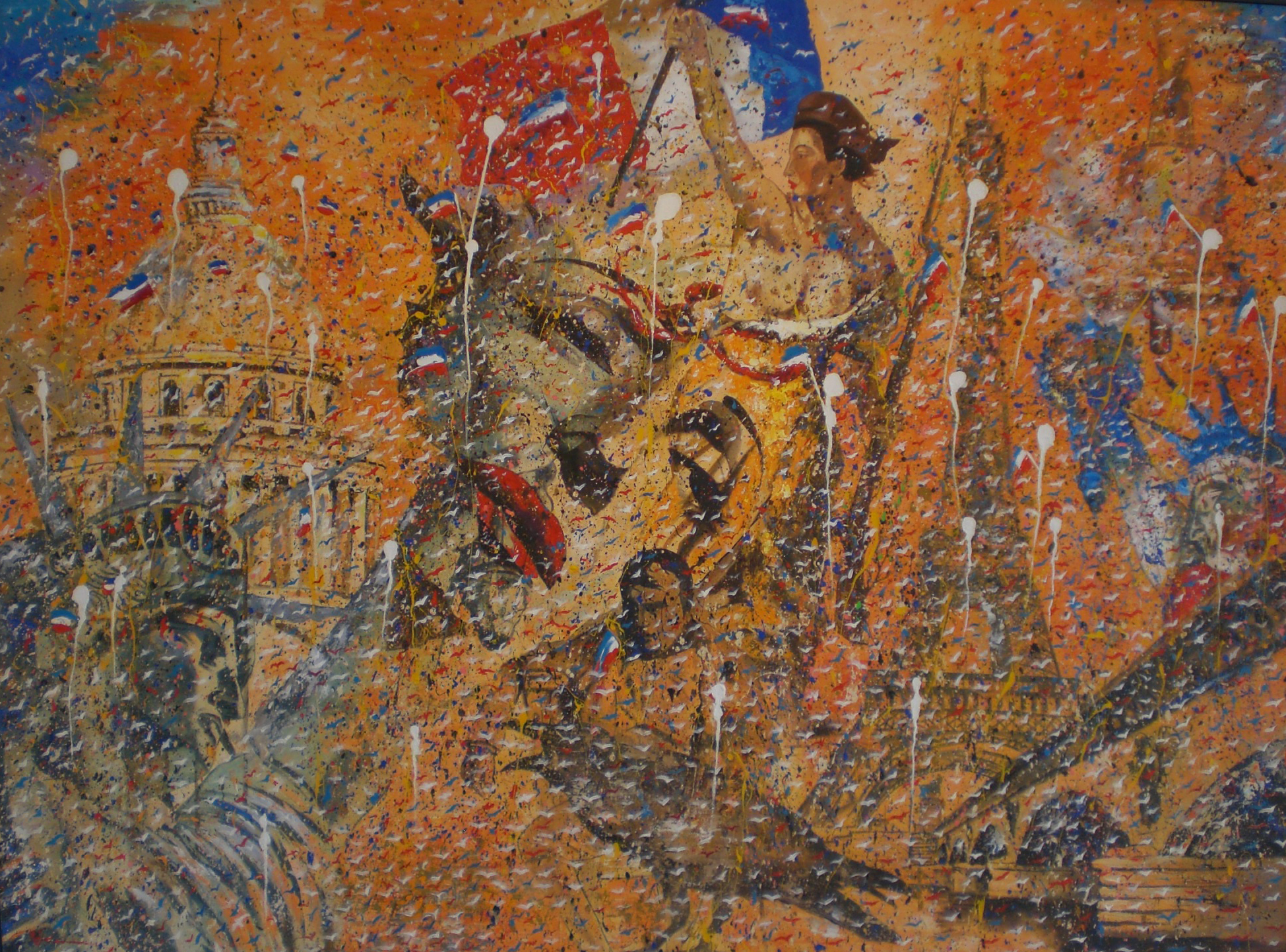
"Friendship Between France and America "
94 x 71 inches
Signed 94" x 71 ", traditional frame.
POR
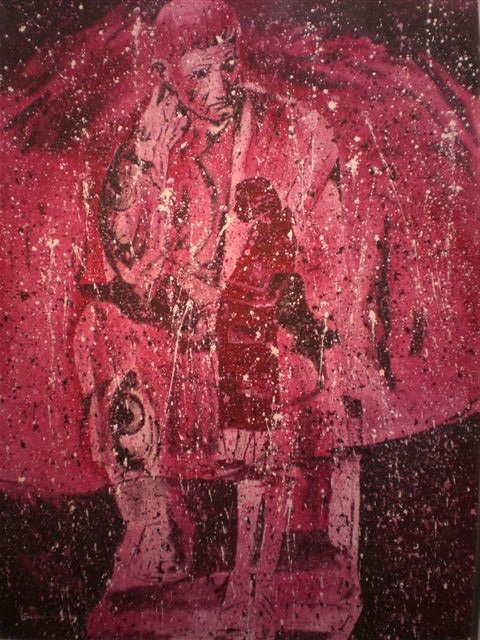
"Aristotle, Kant, Hegel "
47 x 66 inches
Signed 47" x 66 ", traditional frame.
$450,000
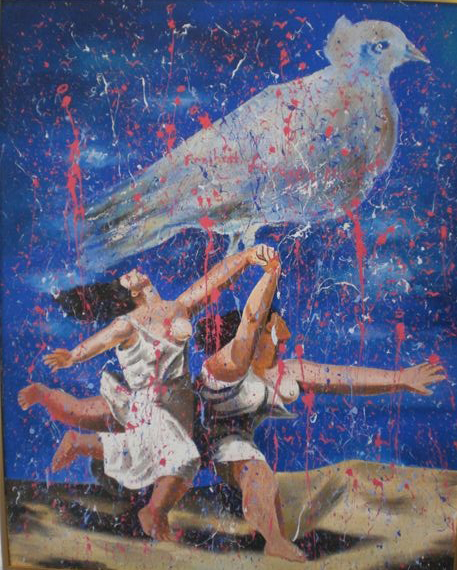
"Freedom "
47 x 58 inches
Signed 48" x 58 ", traditional frame.
SOLD
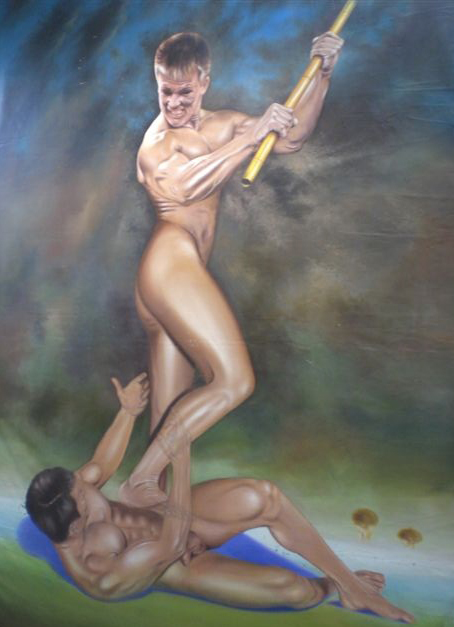
"They hate each other to Destruction "
92 x 63 inches
Signed 92" x 63 ", traditional frame.
POR
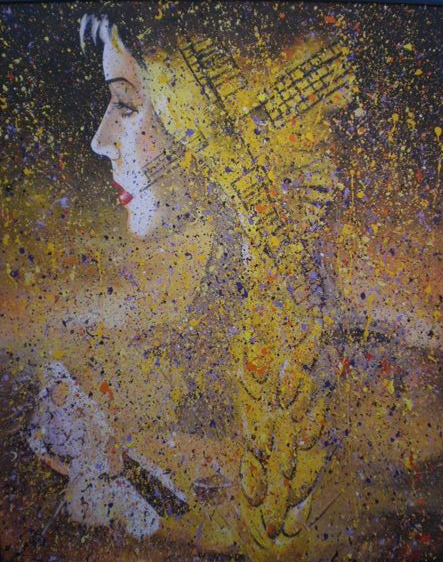
"Cycle of Creation "
46 x 57 inches
Signed 46" x 57 ", traditional frame.
$370,000
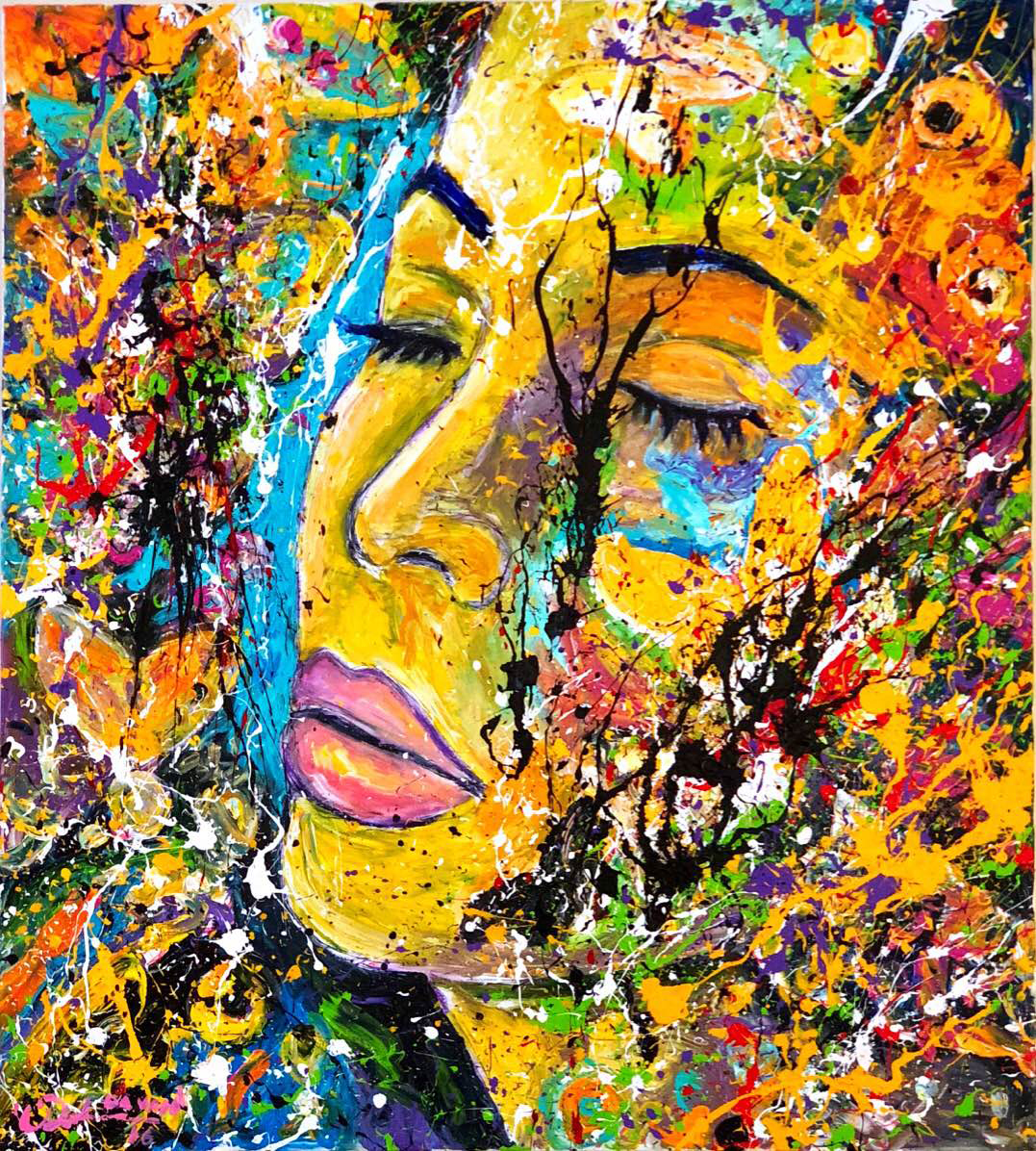
"Yellow Pearl "
40 x 36 inches
Signed 40" x 36 "
SOLD
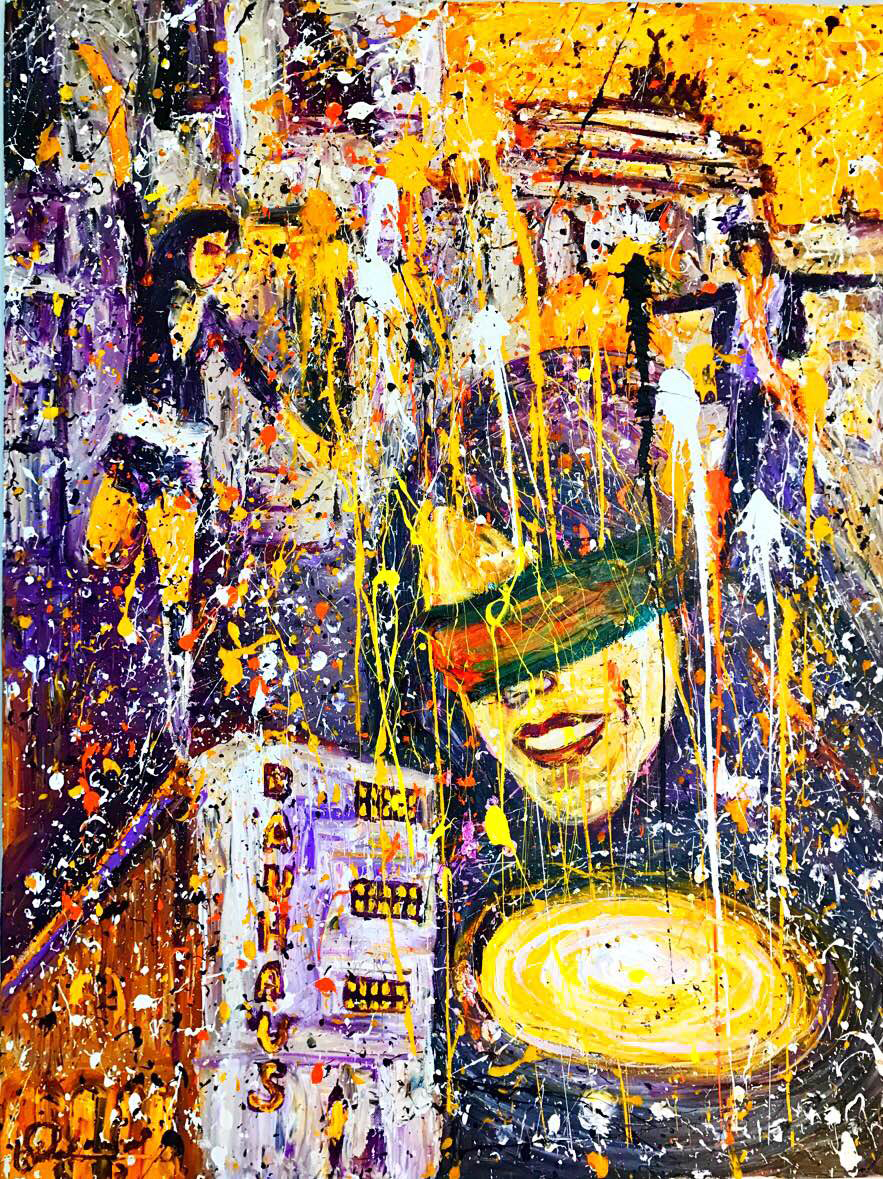
"Mystery of Existence "
40 x 30 inches
Signed 40" x 30 "
SOLD
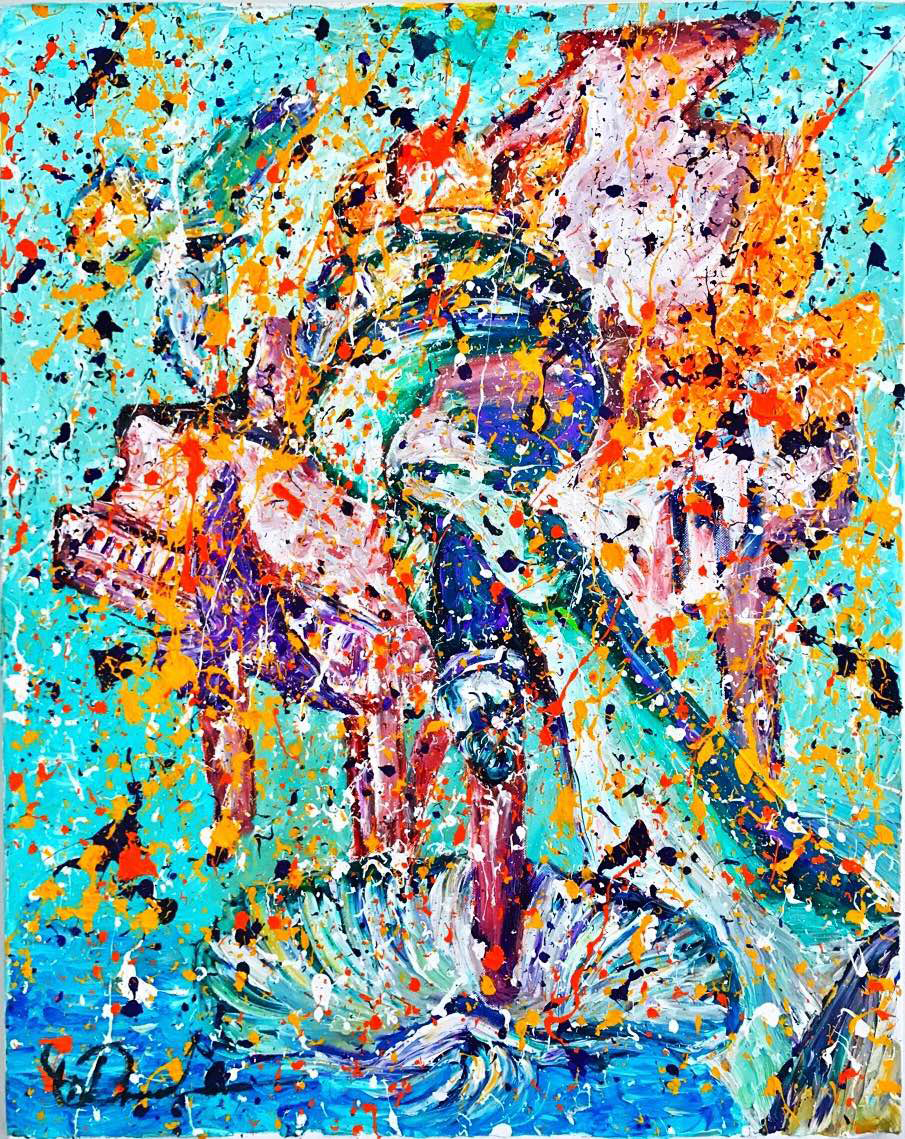
"Melody Of Freedom "
31 x 24 inches
Signed 31" x 24 "
SOLD
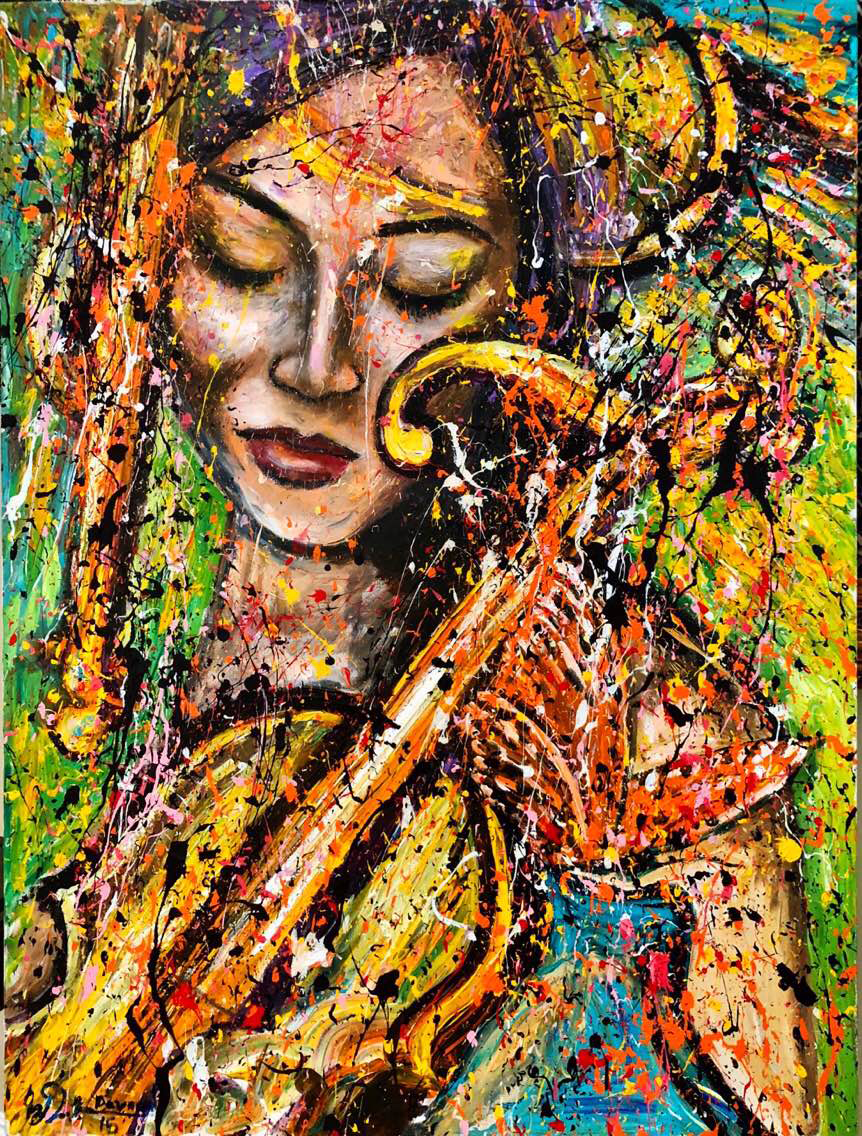
"Holy Celebration "
36 x 48 inches
Signed 36" x 48 "
SOLD
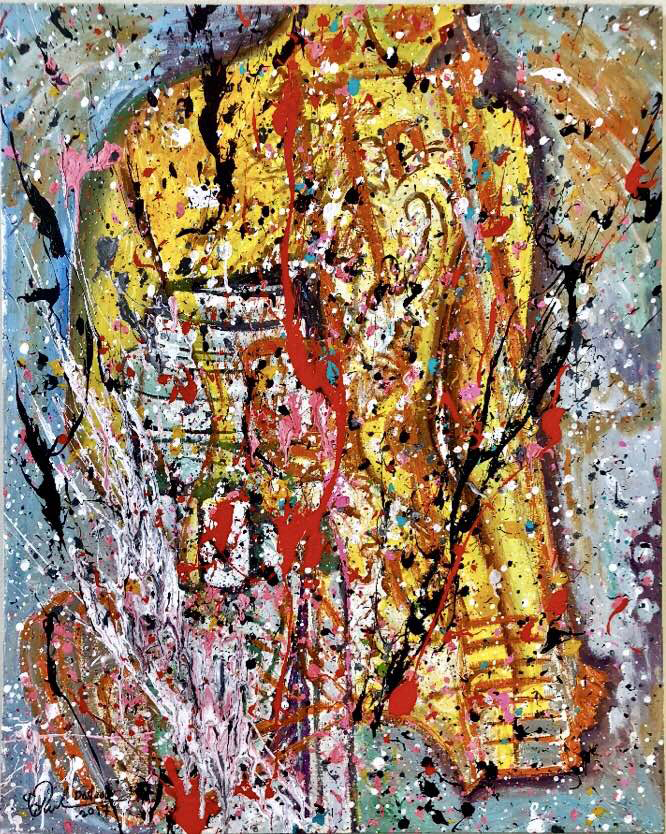
"Sexy Spirit "
32 x 40 inches
Signed 32" x 40 "
SOLD
_____________________________________________________________________________________________________________________________
949-497-5578
| |
|
|
|
_______________________________________________________________________________________
This page, all design & contents, are Copyright (c) 1994 by ArtSellers,
949-497-5578 E-Mail: mark@artsellers.com